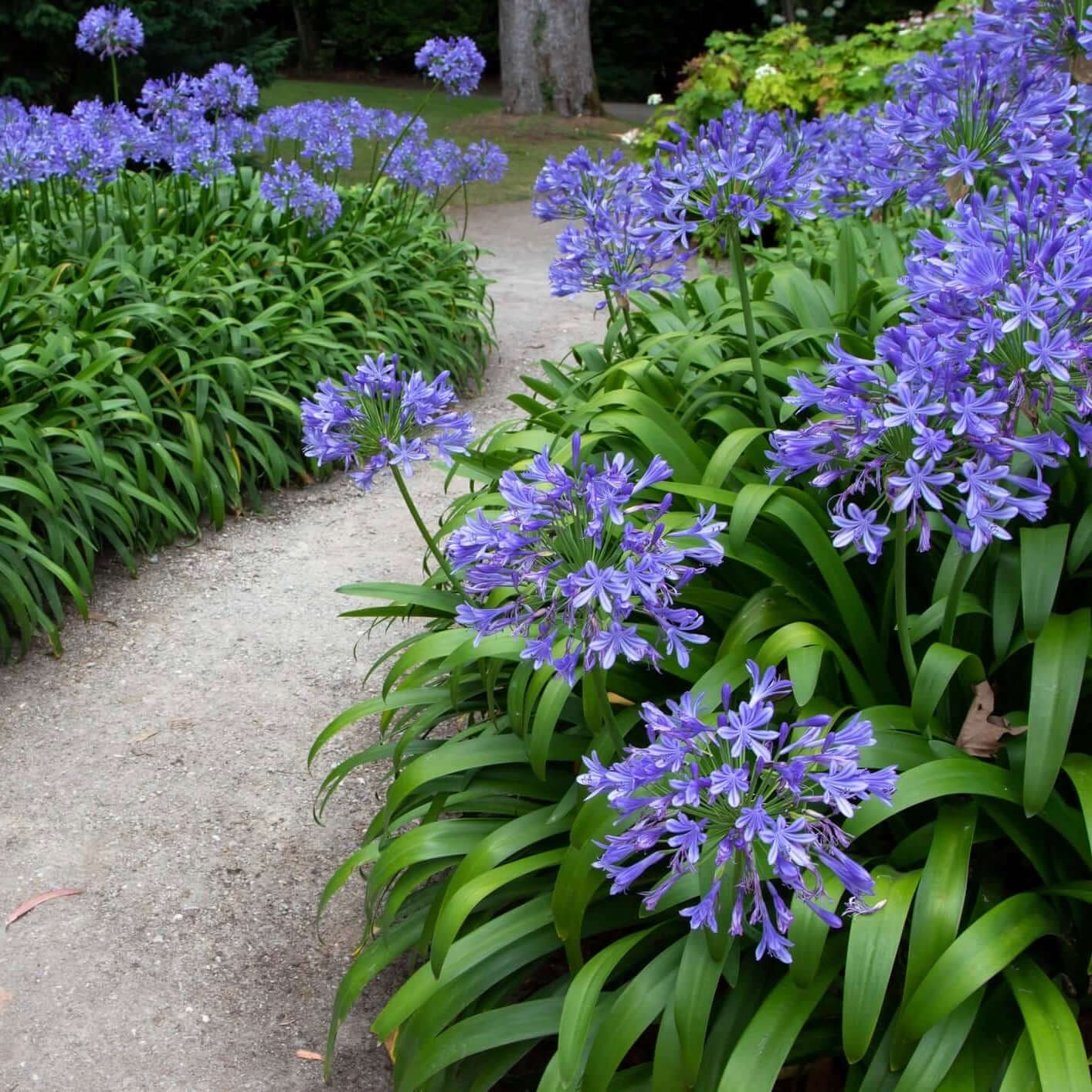Common Agapanthus Troubles and Just How to Fix Them
Common Agapanthus Troubles and Just How to Fix Them
Blog Article
Understanding the Art of Agapanthus Treatment: Important Actions for Healthy Development and Dynamic Blossoms
In the realm of gardening, the cultivation of agapanthus stands as a gratifying endeavor for those who look for to support these stylish flowering plants. From selecting the best variety to understanding trimming methods, the journey towards growing prospering agapanthus plants is diverse and holds the essential to unlocking the complete capacity of these herb gems.

Picking the Right Agapanthus Variety

When choosing the best Agapanthus selection for your yard, take into consideration aspects such as environment suitability, bloom color, and development practice. Additionally, consider the climate in your region to make sure the Agapanthus variety you select can grow in your certain conditions. Comprehending the growth habit of various Agapanthus selections is critical for appropriate placement within your yard.
Suitable Growing Problems
Considering the optimum environmental needs is important for effective Agapanthus farming. Agapanthus plants are delicate to cold temperatures and should be secured from frost throughout wintertime months.
To guarantee healthy growth and lively blossoms, plant Agapanthus light bulbs at a deepness of concerning 2-4 inches and area them 8-12 inches apart. Mulching around the base of the plants aids retain moisture and suppresses weed growth.
Watering and Fertilizing Tips
Preserving appropriate wetness degrees and giving essential nutrients are crucial elements in the care program for Agapanthus plants. It is crucial to strike an equilibrium when it comes to watering Agapanthus. If overwatered, these plants like constantly damp dirt however are susceptible to root rot. Throughout the growing season, water deeply once a week, ensuring the dirt is well-draining to avoid waterlogging. In hotter environments or throughout periods of drought, even more regular watering may be required to keep the dirt uniformly wet. Nonetheless, reduce watering in the winter season to stop water logged conditions.
Feeding Agapanthus is essential for advertising healthy and balanced development and respected flowers. Use a balanced fertilizer, such as a 10-10-10 formula, in the very early spring as brand-new development emerges. By complying with these watering and feeding suggestions, you can guarantee your Agapanthus plants thrive and produce dynamic, resilient flowers.
Trimming Methods for Agapanthus
Pruning Agapanthus plants at the suitable times and with appropriate techniques is essential for preserving their health and promoting optimal development and flowering. The optimal time to prune Agapanthus is in late winter or early springtime prior to new development arises. Begin by eliminating any type of yellowing or dead fallen leaves near the base of the plant. Cut them as close to the ground as feasible without damaging the arising shoots.
Deadheading invested flowers can likewise reroute the plant's energy right into generating even more flowers rather than establishing seeds. If you desire to collect seeds for proliferation, leave some blossoms to fully grown and dry on the read review plant.
Remember to make use of tidy, sharp tools to make accurate cuts and decrease the threat of introducing conditions. Agapanthus. Regular pruning will aid maintain your Agapanthus looking neat and healthy while making sure an abundant display of beautiful blooms
Managing Typical Insects and Diseases
After guaranteeing correct pruning strategies for Agapanthus, it is important to resolve typical pests and diseases that can influence the health and wellness and vitality of these plants. One typical pest that impacts Agapanthus is the Agapanthus gall midge.
Another typical concern is fungal fallen leave spot, which presents as dark lesions on the fallen leaves. To stop fungal illness, guarantee excellent air circulation around the plants, prevent above watering, and eliminate any type of infected leaves without delay. Additionally, Agapanthus plants can experience origin rot if they are grown in improperly draining pipes dirt. To prevent this, plant Agapanthus in well-draining soil and prevent overwatering. By being cautious and taking prompt action against bugs and conditions, you can assist your Agapanthus plants flourish and produce vibrant blossoms.

Final Thought
To conclude, mastering the art of agapanthus treatment includes choosing the right selection, supplying optimal planting conditions, correct watering and fertilizing, appropriate trimming methods, and addressing typical insects and illness. By adhering to these necessary actions, you can make certain healthy growth and dynamic blossoms for your agapanthus plants. Bear in mind to consistently monitor and keep your plants to advertise see this site their overall wellness and longevity.
To ensure healthy and balanced development and vivid flowers, plant Agapanthus bulbs at a deepness of about 2-4 inches and area them 8-12 inches apart. By following these watering and feeding tips, you can guarantee your Agapanthus plants thrive and create lively, long-lasting flowers.
One common bug that affects Agapanthus is the Agapanthus try here gall midge. Additionally, Agapanthus plants can suffer from root rot if they are grown in inadequately draining dirt. By adhering to these necessary actions, you can guarantee healthy and balanced growth and dynamic blossoms for your agapanthus plants.
Report this page